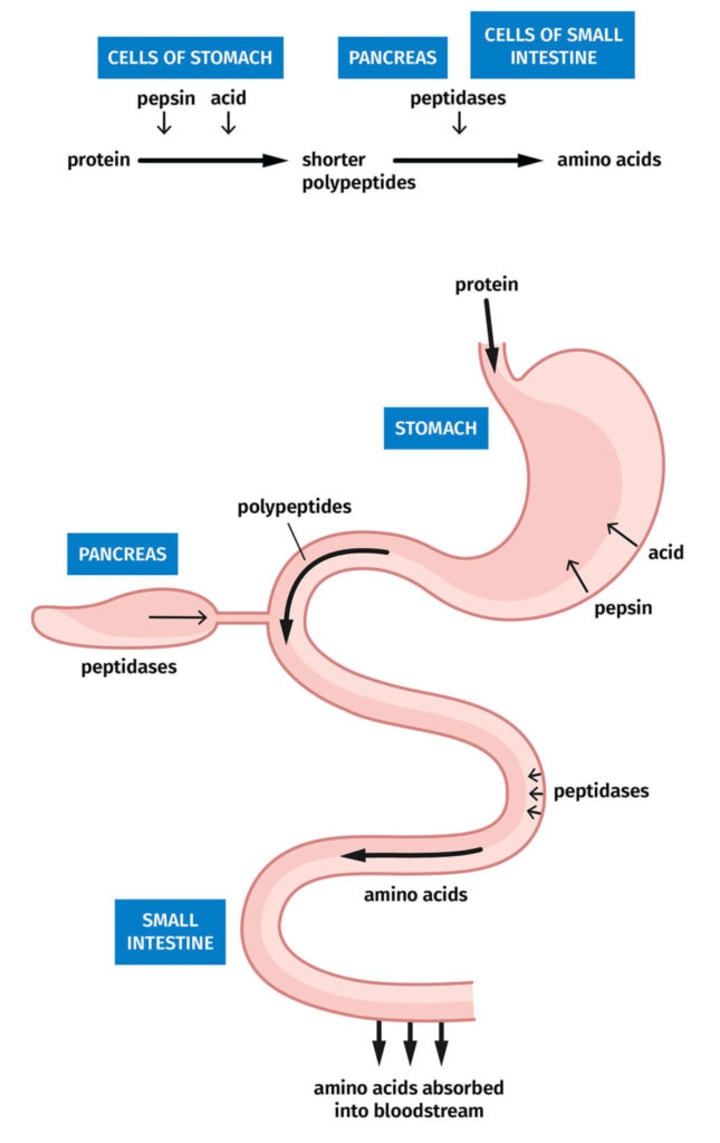Protein Synthesis
What you need to know about protein?

What is protein?
One of the most vital nutrients in your body is protein. Protein is the main component of your muscles, hair, eyes, organs, several hormones, and enzymes. Your bodily tissues can also be repaired and maintained with its aid.
Although not all proteins are created equal, there are steps you can do to improve how effectively your body utilizes protein.
A very large nutrient known as protein is composed of smaller components known as amino acids. Only 11 of the 20 amino acids are made by your body, out of the total of 20. You can only obtain the remaining nine amino acids, known as essential amino acids, through your food.
All nine of the required amino acids are present in high-quality protein sources, including meat, fish, eggs, and dairy products.
PROTEIN SYNTHESIS IN BODYBUILDING

Deductively talking, protein amalgamation is the cycle by which cells construct protein atoms utilizing DNA, RNA, and chemicals. All things considered, it's a cycle during which your body utilizes the amino acids found in protein to construct new muscle.
Throughout the span of a day, your body vacillates between two cycles: building, otherwise called protein union or "anabolism," and breakdown, otherwise called "catabolism."
In the wake of taking a protein supplement, there is a brief period during which you have raised measures of amino acids in your blood. This period, known as hyperaminoacidemia, animates more prominent than typical measures of muscle protein union.
Hard preparing is catabolic, in that you dispense harm on your muscles and separate them. In any case, in the wake of preparing, your body very quickly gets anabolic and fires mending up that harm. Having a pre-exercise or post-exercise shake, or a strong feast with sufficient carbs and dietary protein around preparing, helps launch this cycle. The amino corrosive leucine, which is ample in powders and high-protein food sources, is basic here.
In "Mass Class Nutrition: The Fundamentals of Eating for Growth," scientist Jacob Wilson, Ph.D., diagrams a basic intend to get the most protein amalgamation conceivable throughout a day.
"To boost the muscle-building reaction, you need around 3 grams of leucine for every serving, and that is really what the 30-40 grams of dietary protein in your suppers gives you. Include a couple of BCAA "snacks," either with food, shakes, or enhancements, and you're all set."
HOW PROTEIN IS ABSORBED IN THE BODY?
Your small intestine, which is lined with microvilli, is another place where protein is absorbed. These are tiny, finger-like structures that broaden your small intestine's absorptive surface area. The maximal amount of amino acids and other nutrients can be absorbed as a result.
Amino acids are absorbed into your body and then released into your bloodstream, where they are carried to cells in other parts of your body, where they can begin mending muscle and tissue.

NITROGEN METABOLISM
Due of the nitrogen they contain, amino acids are special. The nitrogen is susceptible to a number of events. The first option is for it to stay on the molecule and be incorporated into the substance that the cell is producing, like a polypeptide. The amine group (NH2) may be moved to another carbon skeleton to generate a new amino acid through transamination of the nitrogen. An illustration would be the transfer of the amine from the non-essential amino acid alanine to the non-essential amino acid glutamic acid via alpha-ketoglutaric acid. For this procedure, water-soluble vitamin B6 is required.
Deamination is a procedure that can be used to get rid of the amine group from the amino acid. The nitrogen is eliminated by this process, and energy is generated from the carbon skeleton. B6 is once more required for this procedure.
Amino acids' deleted nitrogen is eliminated through a variety of channels. The most well-known route is urine, where urea makes up the majority of the nitrogen. Additionally, nitrogen is eliminated through the skin, hair, and nails. Since protein serves as the foundation of each, it is coupled to nitrogen in the
About the Creator
Salman siddique
Hello Everyone!
I write interesting stories






Comments
There are no comments for this story
Be the first to respond and start the conversation.